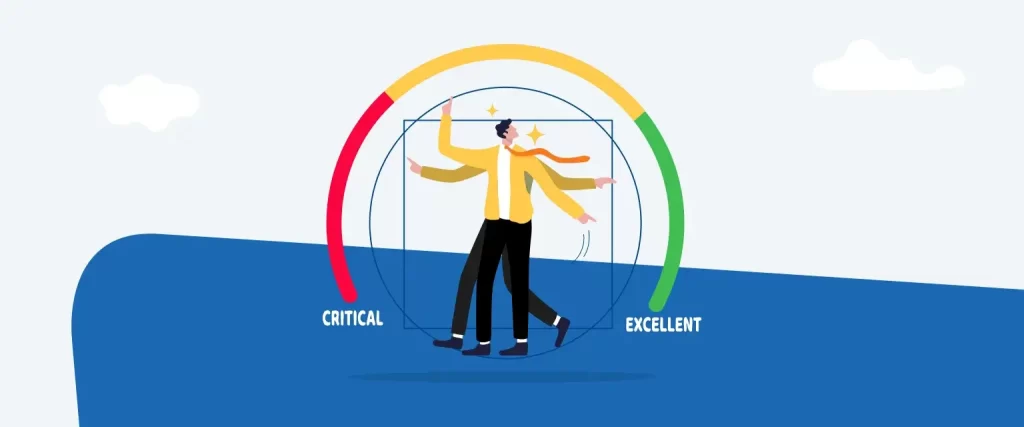- eBooks
- Employee onboarding: Setting your teams up for success
- 10 Useful Onboarding Tools
10 Useful Onboarding Tools

With much, if not all of the onboarding taking place remotely or online, the toolkit you use matters. Below is a collection of platforms and apps you can integrate into your program to make the experience seamless, efficient, and engaging.
1. A video conferencing platform
Access to live/recorded webinars and instructor-led onboarding training is essential to meet the needs of today’s increasingly dispersed and asynchronous workforce. Platforms like Zoom or Google Meet enable face-to-face meetings, welcome calls, and training sessions for new hires.
2. Comms and collaboration tools
Feeling connected with colleagues throughout the onboarding process creates a supportive environment. This helps new employees integrate smoothly and confidently into company culture. It also quickly eliminates knowledge roadblocks. To achieve both, your comms toolkit should include:
-
An instand messaging app
Platforms like Slack or Microosft Teams give new hires an informal way to reach out to groups or individuals in real time.
-
Online discussion forums
New hires want the right information at the right time without having to voice their needs too much. Your busy SMEs, senior executives, and team leaders want to add maximum value to the online onboarding process but (due to time pressures) need to achieve this through minimal effort. The solution? Create online communities of knowledge your new hires can access as and when they need them. And that your busy internal stakeholders can contribute to with minimum fuss.
3. Knowledge management software
With access to an internal wiki new hires can located the information they need in an organized and structured way. Third-party solutions like Confluence or Guru are also useful for centralizing company knowledge, policies, and FAQs. And, by integrating with tools like Notion, Gsuite and Slack, progressive platforms like Dashworks can provide instant answers to company questions using an AI-powered knowledge assistant.

4. An e-signature app
Signing contracts and forms is an important part of onboarding. But not a very interesting one. It can also be problematic if you’re doing it remotely and can’t print off and hand in your document. An e-signature app makes it simple, accessible, and swift for all parties to put their name on the dotted line. Software like DocuSign or Adobe Sign enables quick, paperless signing of contracts and HR documents, simplifying the paperwork process for employees and HR teams.
5. An HRIS
Data is a big part of onboarding. And with data comes data confidentiality. An HRIS manages all your employee data and keeps it safe. Software like Workday or Gusto streamlines HR functions, including payroll setup, benefits enrollment, and personal data management, ensuring new hires are set up efficiently.
6. A survey app
Gathering feedback can help you improve and adapt your onboarding. But if it’s not presented in an accessible format, your new hires won’t engage. Use an app to create compelling and easy-to-complete questionnaires your employees will want to complete. Tools like SurveyMonkey or Culture Amp collect feedback on the onboarding process, allowing HR to measure satisfaction and continuously improve onboarding experiences. Using AI platforms like Levity, it’s also possible to automatically analyze feedback surveys to detect the sentiment in employee responses. And go on to make improvements.
7. An online ordering app
With every new hire comes… stuff. Use specialized software to automate and process orders for stationary, software, and other resources.
8. A task management tool
A new hire’s ‘to do’ list can seem overwhelming. Platforms like Asana or Trello facilitate structured task lists for onboarding. This allows new hires to see their responsibilities and track progress as they tick tasks off their list.
9. Mentor and buddy matching software
Having one, go-to person to talk to can make the difference between a new employee feeling lost and alone or welcomed and befriended. Platforms like Together or MentorcliQ match new hires with mentors or buddies, helping them build connections, get guidance, and settle into the company culture.
10. Mentor and buddy matching software
Training is a big part of onboarding, whether mandatory programs or company-wide courses, job-specific or systems-related guidance. An online training platform or LMS centralizes your training so your new hires can access and complete it with minimal fuss. It tracks progress and completion rates. And, if it’s a good employee training software, it will also integrate with the additional supporting apps and tools we’ve just mentioned. Meaning you can bring your whole onboarding toolkit together under one roof. This also makes it scalable, allowing your onboarding process to keep pace as your company grows. It’s also scalable, allowing your onboarding process to keep pace as your company grows.
Let’s recap!
There are lots of standalone tools, apps, and online resources you can use to design and deliver your onboarding program. Using a learning management system or onboarding training software you can integrate these to provide a more seamless, intuitive, and consistent experience.